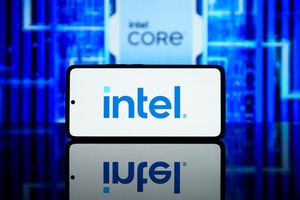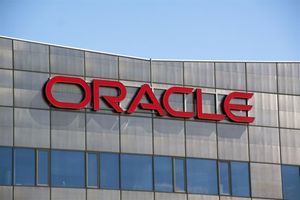
In a landmark move set to reshape the artificial intelligence landscape, OpenAI and Microsoft (NASDAQ: MSFT) have inked a non-binding agreement to fundamentally restructure their strategic partnership. This pivotal accord will see OpenAI's for-profit arm transition into a Public Benefit Corporation (PBC), signaling a significant evolution from its prior "capped-profit" model. The restructuring is designed to empower OpenAI with greater financial and operational independence, accelerate its ambitious AI development initiatives, and assuage investor concerns regarding the intricate nature of their collaboration. For Microsoft, the deal is poised to deliver substantial returns on its multi-billion dollar investment while ensuring continued, albeit recalibrated, access to OpenAI's cutting-edge innovations, solidifying its strategic position in the global AI race.
This development arrives at a critical juncture for both entities, as the demand for advanced AI capabilities skyrockets, necessitating colossal investments in compute power and research. The redefined partnership aims to balance OpenAI's founding mission of ensuring artificial general intelligence (AGI) benefits all of humanity with the commercial imperatives of scaling a world-leading AI enterprise, potentially clearing a path for a future initial public offering (IPO) and unlocking new avenues for capital.
A Strategic Pivot: Unpacking the Restructuring's Genesis and Goals
The recently signed non-binding agreement, initially proposed in May 2025, represents a carefully negotiated evolution of the alliance between the generative AI pioneer and the technology behemoth. At its core, OpenAI's for-profit entity will convert into a Public Benefit Corporation (PBC), a legal structure that mandates balancing profit-making with broader societal goals. This move is a significant departure from OpenAI's 2019 "capped-profit" LLC model, which itself was a shift from its original non-profit status established in 2015. The non-profit parent (OpenAI, Inc.) will maintain control over the PBC, and is expected to receive a substantial equity stake, estimated to exceed $100 billion, from the PBC’s targeted $500 billion valuation in private markets.
This restructuring is largely driven by OpenAI's insatiable demand for capital to fund its intensive AI research and development. The previous capped-profit model, which limited investor returns, presented challenges for attracting the vast sums required for advanced AI infrastructure. By transitioning to a PBC with traditional stock, OpenAI gains significantly enhanced capital-raising capabilities, with an IPO now a clear long-term possibility, offering a more conventional exit strategy for investors. Additionally, the agreement addresses the contentious "AGI clause" from prior terms, which could have allowed OpenAI to unilaterally dissolve the partnership upon declaring AGI. The new structure ensures Microsoft retains access to OpenAI's advanced technologies, regardless of AGI classification.
Key players involved include OpenAI CEO Sam Altman and Microsoft CEO Satya Nadella, whose "months of tense negotiations" ultimately led to this agreement. The timeline saw OpenAI founded as a non-profit in 2015, transitioning to a capped-profit model in 2019 when Microsoft began its multi-billion dollar investment journey. The latest non-binding agreement in September 2025 sets the stage for the next phase. Initial market reactions have generally been positive, viewing the restructuring as a necessary step for OpenAI's continued growth and a pragmatic recalibration for Microsoft, though regulatory scrutiny remains a significant factor.
The Shifting Sands: Who Wins and Who Faces New Challenges
The revised partnership recalibrates the strategic positions of numerous players in the AI ecosystem, creating clear winners and introducing new challenges for others.
OpenAI emerges as a primary winner, securing significant operational flexibility and a clearer, more conventional path to substantial funding, including a potential IPO. Its transition to a PBC, with the non-profit parent retaining a controlling interest and a substantial equity stake, is designed to make it one of the most well-resourced philanthropic organizations globally, while simultaneously enabling aggressive growth investments. Furthermore, OpenAI (N/A: OPENAI) has successfully negotiated a reduction in Microsoft's revenue share from as high as 20% (and potentially 49% in older reports) to an anticipated 8% by 2030, which could funnel over $50 billion in additional revenue to OpenAI. Critically, OpenAI is diversifying its cloud infrastructure, moving beyond exclusive reliance on Microsoft Azure (NASDAQ: MSFT). Multi-billion dollar agreements with Oracle (NYSE: ORCL) and Google Cloud (NASDAQ: GOOGL), alongside partnerships with CoreWeave (N/A: COREWEAVE), enhance its resilience, reduce vendor lock-in, and potentially optimize its colossal computing costs, projected to reach $115 billion through 2029.
Microsoft also stands to gain substantially, despite reduced exclusivity. It retains preferential access to OpenAI's cutting-edge AI models and secures a significant equity stake (reportedly around 30%) in the restructured OpenAI, ensuring its ongoing ability to integrate OpenAI's advancements into its products. The deep integration of OpenAI's models into its Azure cloud platform, Microsoft 365 Copilot, Bing, and other enterprise products continues to be a major growth driver, solidifying Azure's position in the AI-as-a-Service (AIaaS) market. Microsoft's strategic diversification of its AI bets, integrating models from other leading AI companies like Anthropic (N/A: ANTHROPIC) into Visual Studio Code and potentially Microsoft 365 Copilot, serves as a hedging strategy, reducing sole dependency on OpenAI and strengthening its overall AI portfolio. However, Microsoft faces the challenge of a reduced revenue share from OpenAI and the loss of Azure's exclusivity as OpenAI's sole compute provider, which could intensify competition from other cloud providers.
Other AI Companies and Cloud Providers are also significantly impacted. Companies like Anthropic (N/A: ANTHROPIC) and other model developers stand to win as Microsoft's multi-model strategy grants them access to a massive user base. The shift also creates opportunities for a wider range of AI model developers, including those in the open-source community and specialized startups. Conversely, companies relying on a single-model strategy or smaller AI startups (indirectly) might face increased competitive pressure. Oracle (NYSE: ORCL) and Google Cloud (NASDAQ: GOOGL) are clear winners among cloud providers, securing multi-billion-dollar agreements to provide computing infrastructure to OpenAI, significantly boosting their presence in the AI domain. This intensifies the "Cloud Wars." NVIDIA (NASDAQ: NVDA) and AMD (NASDAQ: AMD), as AI chip manufacturers, remain major beneficiaries due to the continuous and massive demand for GPUs and other AI chips fueling the global AI arms race.
Industry Impact and Broader Implications: A New AI Paradigm
The recalibration of the OpenAI-Microsoft partnership resonates far beyond the immediate interests of the two companies, signaling a fundamental shift in the broader AI industry. This event crystallizes several overarching industry trends and sets precedents for future collaborations, competition, and regulation.
One significant trend underscored by OpenAI's move is the pursuit of a "full-stack" AI strategy. OpenAI's ambitious push to control its entire AI ecosystem—from chip design and data centers (like Project Stargate) to software development—reflects a desire for greater independence and control over its technological destiny. This capital-intensive approach highlights the scale of investment required to remain at the forefront of AI innovation. The shift to a for-profit PBC model and the potential for an IPO also align with a broader trend where mission-driven AI startups seek commercial viability to scale their compute-intensive research and deployments, moving towards more traditional corporate structures to attract diverse investment.
The diversification of OpenAI's cloud infrastructure away from exclusive reliance on Microsoft Azure to include Oracle and Google Cloud is a powerful ripple effect. This multi-cloud strategy for critical AI workloads suggests a move towards greater operational autonomy and resilience, reducing vendor lock-in, and creating a more competitive landscape among hyperscalers. This intensifies the global AI "arms race," as companies like Google (NASDAQ: GOOGL) with Gemini, Meta (NASDAQ: META) with Llama, and Anthropic (N/A: ANTHROPIC) fiercely compete for market share and talent. The loosening of Microsoft's exclusivity opens doors for other cloud providers to offer OpenAI's models, potentially leading to the commoditization of AI infrastructure and accelerating innovation by increasing access to frontier AI models across multiple platforms.
From a regulatory standpoint, the evolving partnership has drawn significant attention. Regulators in the U.S. (Federal Trade Commission), E.U., and U.K. (Competition and Markets Authority) have voiced concerns about large tech companies using strategic partnerships to stifle competition in emerging AI industries. OpenAI itself reportedly considered petitioning the U.S. government for an antitrust review of its contract with Microsoft. The deal is subject to regulatory approvals in jurisdictions like California and Delaware, highlighting intensifying scrutiny on AI governance, safety, and corporate structures. The hybrid PBC structure, aiming to balance commercial growth with OpenAI's mission, will be closely watched by regulators to ensure public interest commitments are genuinely upheld.
Historically, these dynamics echo past "software wars" and antitrust battles in the tech industry, particularly Microsoft's own history of intense scrutiny regarding its dominance in operating systems and web browsers. Regulators are keen to avoid a repeat of past consolidation patterns where a few large players gain undue control over a nascent, yet transformative, industry. The negotiations over revenue sharing, IP rights, and cloud exclusivity between OpenAI and Microsoft also mirror past battles over software licensing and platform control. The shift away from a purely "walled garden" approach towards a more open, multi-stakeholder ecosystem signifies a maturing industry seeking to balance proprietary control with broader interoperability to foster adoption and fend off competition.
The Road Ahead: Navigating a New AI Frontier
The restructured OpenAI-Microsoft partnership sets the stage for a dynamic period of innovation, competition, and strategic adaptation across the AI landscape. In the short term, both companies are focused on finalizing the definitive agreement and securing necessary regulatory approvals from state attorneys general. OpenAI's immediate priority will be leveraging its enhanced capital-raising capabilities, potentially through new funding rounds, to fuel its ambitious AI development, including securing the immense computing power needed for projects like Stargate. Microsoft, meanwhile, will continue its deep integration of OpenAI's models across its Azure cloud and productivity suite (Copilot), reinforcing AI as a core pillar of its product strategy. The effectiveness of OpenAI's newly diversified cloud partnerships with Oracle and Google Cloud will also be closely watched for optimal cost, performance, and capacity management.
Long-term possibilities include a highly anticipated Initial Public Offering (IPO) for OpenAI, which would provide significant capital and liquidity for early investors. This move would solidify OpenAI's position as a more independent, financially robust entity capable of charting its own course. For Microsoft, its role will evolve from an exclusive provider to a strategic investor with continued access and a significant equity stake. Its focus will increasingly shift towards maximizing the value of this stake and reinforcing Azure as a crucial, though not exclusive, platform for OpenAI. Microsoft is also reportedly developing its own proprietary AI models to reduce dependency and strengthen its overall AI portfolio. Both entities are committed to driving continuous AI innovation, with OpenAI focused on advanced models and AGI, and Microsoft on integrating these into practical, enterprise-grade solutions while upholding ethical AI leadership through OpenAI's PBC structure.
Strategically, OpenAI is pivoting to a more conventional corporate structure, requiring it to balance commercial ambitions with its founding mission under the oversight of its non-profit parent. Microsoft's adaptation involves recalibrating from exclusivity to a "right of first refusal" for new capacity and a reduced revenue share, necessitating a focus on indirect benefits and strengthening its enterprise AI ecosystem.
Market opportunities include massive growth in AI-driven productivity through integrations like Microsoft's Copilot, driving significant efficiency gains across industries and expanding the AI-as-a-Service market. OpenAI's enhanced capital and diversified partnerships could unlock new revenue streams, with projections of $125 billion by 2029. Challenges include ongoing regulatory scrutiny from antitrust bodies, intensified competition from other well-funded AI firms, the astronomical computing costs for advanced AI, and the difficulty of maintaining a "moat" as AI capabilities become more commoditized. Monetization uncertainties for new AI features also persist for Microsoft.
Potential scenarios range from a balanced growth and collaborative environment, where both companies thrive in their redefined roles, to increased competitive tension as OpenAI diversifies and Microsoft develops its own AI models. Regulatory intervention could lead to further adjustments, and a successful OpenAI IPO remains a key possibility, validating its new corporate structure. Ultimately, the long-term outcome could lean towards an "AI as a utility" model, where the competitive advantage shifts to effective distribution, integration, and trust—areas where Microsoft's enterprise presence offers a significant advantage.
A New Chapter in AI: Significance and Investor Insights
The restructuring of the OpenAI-Microsoft partnership marks an indelible moment in the annals of artificial intelligence, signifying a sophisticated attempt to navigate the complex interplay between rapid technological innovation, colossal financial requirements, and the foundational ethical commitments of AI development. This move addresses governance vulnerabilities, facilitates greater financial flexibility for OpenAI, and recalibrates Microsoft's strategic involvement, aiming to ensure sustained leadership in AI research and deployment.
The key takeaways underscore OpenAI's increased independence and a clearer path to commercial viability, Microsoft's evolving role as a strategic investor and infrastructure backbone, and the industry's continued wrestling with how to balance profit with public benefit through hybrid corporate structures like the Public Benefit Corporation. The AI market moving forward will be characterized by intensified competition among cloud providers, escalating demands for computing power, and heightened regulatory scrutiny over AI governance and market concentration.
The lasting impact of this restructuring will likely be seen in the normalization of hybrid corporate structures within the tech sector, redefining the terms of collaboration between powerful tech giants and innovative startups. It will further accelerate the global race for AI supremacy by enabling OpenAI to secure the vast resources needed for its ambitious projects. This shift provides a clearer, albeit still complex, operational model for a company that began with a unique, mission-first mandate but quickly found itself needing to operate on a massive commercial scale.
Investors should closely monitor several key developments in the coming months. Foremost is the finalization of the definitive agreement, as its specific contractual terms will reveal crucial details on revenue sharing, intellectual property rights, and governance. Regulatory approvals from California and Delaware Attorneys General are essential; any delays or conditions could impact the timeline and nature of the transition. Watch for announcements regarding OpenAI's capital-raising efforts or concrete steps towards an IPO, signaling its enhanced financial independence. Assessing the performance of OpenAI's diversified cloud partnerships with Oracle and Google will be critical for understanding its scaling ambitions. Finally, observe how Microsoft continues to integrate OpenAI's models into its products (like Copilot and Azure AI services) and how its own in-house AI development evolves alongside this recalibrated partnership, as Microsoft (NASDAQ: MSFT) remains a "Strong Buy" due to robust Azure growth and AI integration. Any further legal developments, such as the lawsuit filed by Elon Musk (N/A: ELONMUSK) against OpenAI, also warrant attention, as they could still influence OpenAI's structure and mission.







